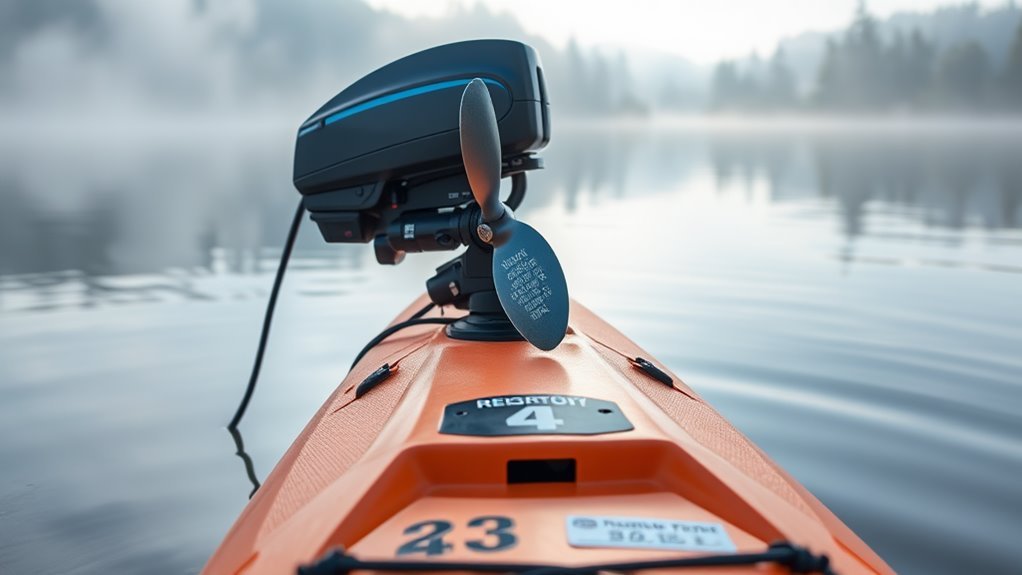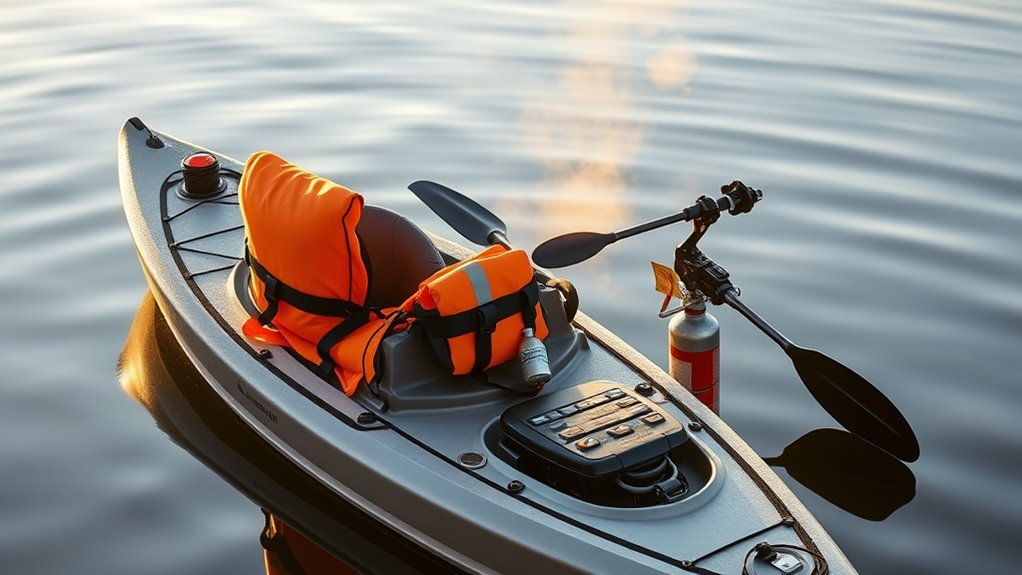Adding a trolling motor to your kayak changes its legal status, requiring registration in most states. The registration rules aren’t optional – they’re legal requirements that vary by state and the motor’s power output.
Here’s what triggers the need for registration:
- Any motor installation (electric or gas)
- Power output above state minimums
- Use in public waterways
State-specific requirements generally include:
- Displaying registration numbers
- Carrying proof of registration
- Meeting safety equipment standards
- Paying registration fees
For example, in Florida, all motorized vessels need registration, while California requires it for motors above 15 horsepower. Texas mandates registration for any motor-powered vessel, regardless of size.
“I’ve seen too many folks get ticketed because they thought small trolling motors were exempt. Trust me, that $30 registration fee beats a $250 fine any day,” – speaking from 20 years of experience helping kayakers with motor installations.
Basic registration steps:
- Contact your state’s boating authority
- Complete registration forms
- Pay required fees
- Display registration numbers
- Carry documentation onboard
Remember that registration protects you legally and helps emergency services identify vessels in distress. The process is straightforward, and most state websites offer online registration options.
Registration Requirements for Motorized Kayaks

When you add a trolling motor to your kayak, you’re no longer piloting a simple paddle craft – you’re operating a power boat in the eyes of the law. That means mandatory registration, no exceptions.
We’ll cut straight to the chase: all motorized kayaks require registration, even with small electric trolling motors. You’re looking at an annual fee between $10-15, and you’ll need to display those hull numbers prominently.
Skip this step, and you’re setting yourself up for fines when the authorities spot you on the water.
Don’t assume your trolling motor’s low horsepower gets you a free pass. Even if it’s under five hp and doesn’t need a title, registration is still required.
Check your local DNR regulations – they’re the final word on compliance requirements.
Legal Classifications and Definitions
Under maritime law, a kayak with a trolling motor isn’t just a beefed-up paddle craft – it’s legally classified as a motorized vessel. Years ago, this distinction might’ve seemed trivial, but today’s regulations are crystal clear: add power, add responsibility.
| Classification | Requirements | Penalties |
|---|---|---|
| Motorized | Registration | $100+ Fines |
| Non-motorized | No Registration | None |
| Hybrid (w/removable motor) | Registration Required | Varies by State |
Even if you’re running deep cycle batteries on an ultra-light setup, there’s no wiggle room here. The moment you bolt on that trolling motor, your kayak transforms into a power boat in the eyes of the law. This means mandatory registration, hull numbers, and annual fees – no exceptions, no matter how small your motor. Additionally, understanding the power requirements for your motor can help ensure compliance with local regulations.
Safety Equipment Essentials

Safety equipment isn’t optional once you’ve strapped a trolling motor to your kayak.
We’re now dealing with power boat regulations, and that means a whole new set of safety gear requirements.
Let’s get straight to what you’ll need to stay legal and safe on the water while complying with boating regulations.
- Life jackets – One properly-fitted PFD for each person aboard, no exceptions
- Emergency signals – A whistle at minimum, plus proper lighting for night operation
- Throwable flotation devices – Required for power boats, even with electric motors
- Navigation lights – Bow and stern lights for operation after sunset
State-Specific Registration Guidelines
Beyond the safety gear requirements, your next major consideration is steering through state registration rules.
Let’s be clear: when you add a trolling motor to your kayak, you’re fundamentally creating a power boat in the eyes of most state laws. This means registration is mandatory, regardless of title status.
State variations exist, but here’s what’s universal: you’ll need a hull number and should expect to pay registration fees between $10-15 annually.
Even if your electric trolling motor is under five horsepower, you’re not off the hook – registration is still required in most jurisdictions.
Motor specifications matter less than the simple fact that it’s motorized. Don’t risk fines; check your local regulations and register accordingly. It’s a small price for legal compliance. Additionally, understanding the thrust requirements for your specific kayak can help ensure you’re compliant with local motor regulations.
Registration Process and Documentation

Once you’ve decided to motorize your kayak, the registration process demands specific documentation and careful attention to detail.
We’ll walk you through the necessary compliance steps to guarantee you’re following regulations and avoiding potential fines.
- Obtain your kayak’s hull identification number – it’s required for registration and must be clearly visible.
- Complete the registration application, which we recommend downloading from your state’s website.
- Submit proof of ownership documentation along with the $10-$15 annual registration fee.
- Display your registration numbers properly once received – they must be visible from both sides.
Penalties and Enforcement Measures
While registration may seem like a bureaucratic hassle, the consequences of non-compliance pack a serious punch.
We’ve seen boaters face steep fines and time-consuming legal proceedings for skipping this simple requirement. Let’s be clear: enforcement challenges aren’t working in your favor.
Your best compliance strategies? First, register your motorized kayak immediately – it’s only $10-15 annually.
If you’re caught without registration, you’ll likely face penalties that far exceed this modest fee. Second, if you do receive a citation, get registered before your court date.
We’ve seen many cases where judges drop fines when owners show good faith by registering beforehand.
Don’t risk spending your day explaining yourself to a magistrate when prevention is this affordable and straightforward.
Frequently Asked Questions
Do I Need to Register My Kayak if I Have a Trolling Motor?
Yes, we’ll need to register any kayak with a trolling motor. Trolling motor regulations classify it as a powerboat under fishing kayak laws, and kayak safety requirements mandate registration regardless of motor size.
What Happens if You Get Caught With an Unregistered Kayak?
If we’re caught with an unregistered kayak, law enforcement can issue tickets and fines. We’ll likely face penalties for violating boating regulations, though some fines may be dropped after registering properly.
What States Require You to Register a Kayak?
You’ll save yourself a million headaches by checking your state’s kayak registration process. We’ve found state regulations vary widely – from Florida’s strict boating safety requirements to Texas’s more relaxed motorized vessel rules.
Do Kayaks Have to Be Registered in TX?
In Texas, we don’t need to register non-motorized kayaks. However, if we’ve added a trolling motor, kayak registration requirements and Texas boating laws mandate that we must register our kayak.